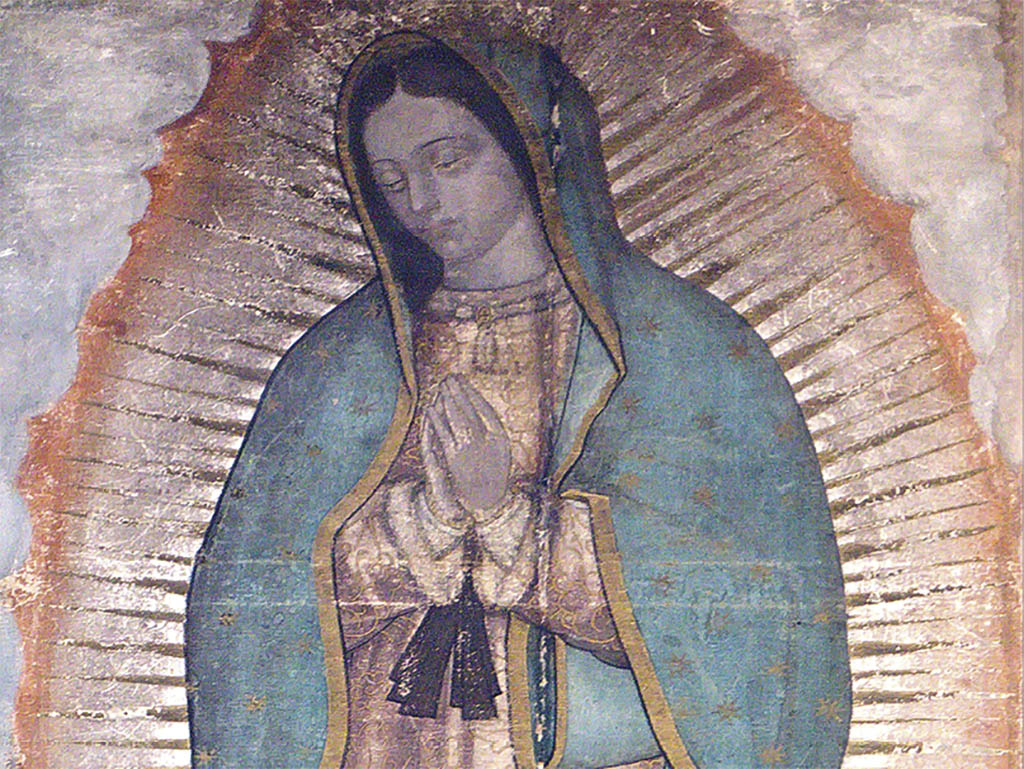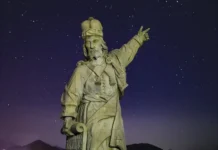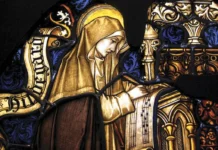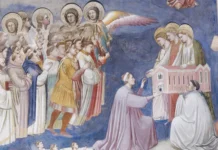From a historical perspective, the apparitions of Our Lady of Guadalupe take form as the first great sign of God for a continent called to a glorious future, while it was yet awakening to the truths of the Faith.
How many mysteries and “miracles” greet us when we contemplate nature! And how effectively they show us the limits of human science, making us realize we are dependent beings!
There are signs, lessons and secrets to be read every day in the consummate and almost infinite book of the universe. However, rarely do people today ask themselves who is the “Genius” that conceived and produced such a perfect and magnificent work.
The laws that regulate the order of the universe continue to perform their office at the service of life, even when the rights of their Author are not recognized… The earth continues its pilgrimage around the sun, in a cadence that determines our days and years; the vegetation consistently grows and produces fruit; felines, birds, fish and other animals duly follow their instincts, without omitting or changing anything…
Thousands of examples of every sort could be given. In light of them, some conclude that these are but curious “coincidences” that enable our existence… But if everything is the result of “chance”, given the perfection of the universe, should not “chance” then be proclaimed “god”, or at least, the greatest “genius” in history?
Signs of God’s will
There is no doubt that the hand of the Divine Author can be seen in the signs of nature. However, there is something even more important. God created us out of goodness and wishes to manifest it to men through “signs of the times” (Mt 16:4). For this He reserved beautiful pages in history, in which He surpasses His natural “miracles” by the working of supernatural miracles, which allow man to examine and discern the divine will.
What is Sacred Scripture but an abundant assortment of illustrations of such works? What a wealth of episodes they describe of God’s intervention in portentous events! Miracles at sea, miracles involving animal and vegetal nature, and the human body, such as cures and resurrections; miracles witnessed by multitudes or performed in solitude… All of them are signs of the Most High, which found their plenitude in Jesus Christ, from whom sprang forth an inexhaustible font of proofs of divine love: the Holy Catholic Church, ark of the signs of God’s New Covenant with humanity.
It is from this sacred and immortal perspective that I invite the reader to contemplate the first great sign given by God for the Americas, when, full of promise, they began to open up to the evangelizing action of the Church – the apparitions of Our Lady of Guadalupe
Faith, history, and even science will help us probe the deep significations of this sign of the times, by means of which Mary Most Holy reveals marvellous aspects of her maternal mercy, which until then were unknown.

Conflicting sentiments in face of the New World
It was the dawn of the sixteenth century, and the Church in the Old Continent was beset with painful wounds. The Lutheran heresy had broken the unity of the Faith in the Germanic kingdoms, dragging along with it numerous adherents. England capitulated to the desires of Henry VIII, who usurped control of the Church, dispensing with the Pope. Zwingli brought the Lutheran ideas to Switzerland. In France, Calvin undertook a similar attempt at religious sedition… The first step of a long process of disaggregation in the Mystical Body of Christ was taking hold, and the Council of Trent reacted, using unprecedented means in the pastoral and theological life of the Church.
On the New Continent across the sea, the discoveries of Columbus, furthered by ongoing maritime expeditions, awakened two conflicting sentiments in many hearts: hope and perplexity. Hope in face of an unknown and promising world which was opening itself to the Kingdom of God; perplexity in face of the reality of the indigenous human type, typically immersed in a savage lifestyle for untold generations, and accustomed to unspeakable atrocities.
Idolatry reigned among the Amerindians, and not just any idolatry! The fomenting of hatred, vengeance and rivalry was inculcated in minds and externalized in totems and in divinities craving human sacrifices. Added to this was moral licentiousness, theft, endless wars and many other tendencies that cause one to wonder: who was personified in the pre-Colombian idols? Who was it that profited from these aberrations? Such a network of bloody and anthropophagic beliefs, spread over the vast American territories, could be compared to a great idolatrous body which nourished its members with sinful excesses.1
It is not surprising that a respected Mexican writer has summed up the sad religious and social state of his country with this brief phrase, which could equally be applied to the entire American continent: “The country inhabited by our ancestors was a hell, and nothing less.”2
Arrival of the Spanish in Mexico
It was a scene painted in these shades that met the eyes of the Spanish on April 22, 1519, when they disembarked on the land of the Mexican or Aztec Empire, whose capital was the imposing city of Mexico-Tenochtitlán, at the time having “close to two hundred and fifty thousand inhabitants.”3
The commander of the expedition, Hernán Cortés, had his entire army kneel down and pray the Rosary in the sand of San Juan de Ulúa beach, for he had great devotion to Our Lady. This was evinced by the fact that he always advanced under the auspices of a beautiful standard depicting the Blessed Virgin Mary with hands folded in prayer, her head crowned, haloed with twelve stars, and clothed with a reddish tunic and a blue mantle.
The landing of the white men on the Mexican coast – clothed in black on that occasion, as it was Good Friday – was immediately associated with the fulfilment of certain prophecies handed down by the ancestors of the natives, which announced the return of Quetzalcóatl, a god who in ancient times had departed by sea, promising to return to take possession of the kingdom.
There were many coincidences between this tradition and the arrival of the Spanish: their mysterious “floating houses” arrived precisely on the day that the Aztecs commemorated the feast of Quetzalcóatl, who also was clothed in black and did not accept human flesh as food. Thus, the trailblazers were received as true ambassadors of that divinity, more out of fear than reverence.
A new phase of history opens
However, as time went on, unforeseen circumstances reversed the situation… From one day to another, the Aztecs became hostile, obliging the Spanish to retreat to the allied Indigenous cities. There, the Spanish recovered from the blow and tried to make up for their numerical disproportion to their contenders.
At that juncture, a “weapon” unknown to the Aztecs and interpreted by them as the vengeance of Quetzalcóatl fortuitously attacked the City of Mexico: a smallpox epidemic mercilessly decimated the population, sparing only a minority who were left more dead than alive. The Spanish benefited from the occasion to surround the immense capital, supported by friendly tribes, and managed to take the city two years after they first set foot on Aztec territory. A fierce clash ended the history of the empire and consolidated the new phase that was opening: the union of the European with the native American.
The Church could not remain indifferent to the good of souls. Therefore, it began the difficult mission of catechizing a savage people, so barbaric that some even questioned whether the Amerindians had a soul… In the far-off capital of Christianity, the Holy Father tirelessly insisted on the urgent need to lead to the baptismal font the “poor and maimed and blind and lame” (Lk 14:21) of the Gospel parable, called by the Lord to the Banquet of the Faith in place of those guests who refused the invitation (cf. Lk 14:16-24).
Dozens of missionaries, especially belonging to religious Orders, undertook an initiative more difficult than subjugating with weapons: conquering the heart of the indigenous people for Christ. Nevertheless, they were not alone… As we will soon see, the very Mother of God took this task upon herself! And her first visible intervention, recognized by the Church, was precisely the apparition of Guadalupe.
A resplendent Maiden
Cuauhtlatoatzin – speaking eagle, in the Nahuatl language – was the name of an Indian born in 1474, in the city of Cuautlitlán, allied with the Spanish in the fight against the Aztecs and located twenty km. from the capital. He was married to a native woman named Malintzin and, in 1524, with Holy Baptism, he received the Christian name of Juan Diego, and she, Maria Lúcia. He was fifty-seven years of age, and already a widower, when the great event of his life took place, at dawn, on Saturday December 9, 1531.
He was hastening toward the City of Mexico to receive instruction in Catholic doctrine and attend Holy Mass when, while passing Tepeyac Hill, he heard the beautiful singing of birds, as a prelude to a captivating voice that tenderly beckoned him: “Juanito, Juan Dieguito!”4 Far from feeling fear or seeking to hide, he felt his innocent heart overflow with joy and climbed to the top of the knoll to look for the source of that voice.
The Nican Mopohua5 narrates that there he encountered a Maiden as resplendent as the sun, standing upon rocks that shone like precious jewels. The earth displayed the colours of the rainbow and the foliage glowed with shades of jade, gold and turquoise. It was the Virgin Mother of God who beckoned her humble servant, so as to entrust him with the mission of communicating to the Bishop of Mexico her desire that a “sacred little house”6 be built on that site, for she wished to erect a pedestal there to glorify her most beloved Son.
Friar Zumárraga demands a sign
Juan Diego appeared before Friar Juan de Zumárraga – a Franciscan priest who had been appointed as Bishop, but had not yet received episcopal ordination – and explained everything Our Lady had revealed to him. The prelate paid no attention to him on that particular day…
Desolate, he returned to Tepeyac, to express to the heavenly Mother his inability to fulfil the mission she had entrusted to him. The Blessed Virgin, however, encouraged him to return to the Bishop and repeat the request from Heaven.
The next day, Sunday, Juan Diego again transmitted the message to Friar Zumárraga. The latter was impressed with his insistence and with the details and coherence of his report of the apparitions, but was not convinced: he demanded a sign to confirm its authenticity. Mary’s messenger assented without hesitation and asked him what sign he desired. Somewhat taken aback with the Indian’s composure, Friar Zumárraga summarily dismissed him.
Juan Diego returned to Tepeyac and conveyed to the Lady the demand of the ecclesiastical authority. She replied:
— Very well, my son. Return tomorrow to the city to bring to the Bishop the sign requested. I will be waiting for you here.

Two complementary missions
Upon returning home, Juan Diego found his uncle Juan Bernardino on the brink of death, afflicted by a sudden illness, and he spent the entire day caring for his sole remaining relative, who had looked after him since childhood in the place of his deceased parents. However, all his efforts to restore his uncle’s health proved futile. Early Tuesday morning he left to fetch a priest to administer the last Sacraments to him.
Two very different missions marked the trip: to get the heavenly sign of a story that was beginning and to help a dying man in his last moments. From this perspective, Juan Bernardino could well personify a continent expiring in the darkness of sin, without human means for salvation, but which was being given, with the luminous assistance of the Blessed Virgin Mary, a sign to save itself, in view of a future marked by faith!
On the way to the city, Juan Diego bypassed the site where he had seen Our Lady three times, fearing he would not have time to carry out both tasks. He took a shortcut, intending to ascend to Tepeyac in the afternoon. Perturbed by anguish and urgency, he did not even think of asking her for a miracle…
She, however, acquainted with the vicissitudes of human life, appeared along the way, asking him where he was going. Juan Diego fell to his knees, affectionately greeted her and explained the distressing situation which prevented him from fulfilling the heavenly plan. The kind Lady replied:
— Listen and let it penetrate your heart, the smallest of my sons: do not be troubled or weighted down with grief. Do not fear any illness or vexation, anxiety or pain. Am I not here who am your Mother? Are you not under my shadow and protection? Am I not your fountain of life? Are you not in the folds of my mantle? In the crossing of my arms? Is there anything else that you need? Do not worry about the illness of your uncle, he will not die now. Have no doubt that he is already cured.
Miracles rich in meaning
At that moment – as he would learn later –, she also appeared to his uncle and cured him. She then sent Juan Diego to the top of the hill to gather the flowers he would find there and bring them to her. Arriving there, he was astounded to see a great variety of fragrant Castilian roses, out of season; he hastily gathered them up and bundled them into his rustic tilma7 and brought them to Our Lady. She arranged them in the mantle of the good Indian, who immediately set out give them to the Bishop.
After a long wait, he was finally received by Friar Zumárraga. He was then able to tell all that had happened and to give him the sign sent by Mary. He opened his tilma from which numerous roses fell and an even more stupendous miracle came to light: invisible hands had imprinted the image of the Blessed Virgin on the tilma, just as she appeared on that day on Tepeyac and may be venerated today in the Basilica of Guadalupe.
Juan Bernardino, from his home, awaited Juan Diego’s return to tell him of the resplendent Lady that had also appeared to him, bringing him the desired cure and revealing the name by which she wished to be venerated: “The perfect Holy Virgin Mary of Guadalupe.”8
Thus, two richly meaningful complementary miracles, had been wrought. In that historical context, the restoration of the venerable old man’s health represented the cure of humanity and a radical change in the history of the continent. The miraculous image imprinted on the tilma indicated that Mary was involving herself entirely in the evangelization of the Americas, in a mystical manner, prompting Popes in the twentieth century to proclaim her as Empress and Patroness of this New Continent.9
Sign of the perennial covenant with her people
Noteworthy is the fact that the sign was only given in the last apparition, just as happened centuries later in Fatima. And it was not only a miracle to confirm a transitory reality. The image of the Virgin, imprinted on that coarse and fragile fabric, would remain unscathed with the passing of time, evoking the characteristics of the Woman described in the Apocalypse (cf. Rev 12:1-2) and the one promised, still in Paradise, to sinful humanity (cf. Gn 3:15).
In beholding the Guadalupan tilma we recall the Holy Shroud of Turin, similar to it in terms of the inexplicable impression of an image on cloth, as well as for its preservation over the course of centuries, serving as a permanent stimulus to faith for those who contemplate them.
The most venerable image of Guadalupe is, moreover, a sign abounding with other signs. The cloth of the tilma is made of a vegetal fibre called ixtle, which disintegrates in less than twenty years. Faithful replicas made with the same textile did not last even a decade… And yet this tilma has remained unaltered for almost five centuries, despite having been displayed without glass protection for more than one hundred years, in a humid and nitrous environment, exposed to the smoke and heat of thousands of candles.
To this sign of the perennial covenant established by Our Lady with her people, two other miraculous facts can be added: in 1785, a corrosive liquid was accidentally spilled on the edge of the mantle which only stained the fibres without causing destruction. And in 1921, a bomb exploded at the foot of the image which shattered stained glass windows, and twisted candlestick holders and a bronze crucifix. The blast even affected neighbouring houses, but the cloth remained intact!10
The very existence of the image imprinted on the tilma is a continual portent, a sign of Our Lady’s constant presence among her children. According to the research of highly specialized technicians, “No known pigmentary substances could be detected in the fibres […]. There are no pigments of a mineral, vegetal or animal nature; we could say that it is a painting without paint […]. We are faced, then, with a continuous apparition of the Blessed Virgin Mary.”11
Union between Heaven and earth
The stars of the mantle and the arabesque symbols on the garment are not merely ornaments. According to Msgr. Eduardo Chávez Sánchez, a leading expert on the subject, it is a veritable “codex” of signs which the Indians knew how to read
The blue mantle represents Heaven, and the forty-six stars imprinted on it “surprisingly coincide with the constellations present in the sky on December 12, 1531.”12 The rose-dawn hue of the tunic and the flowers that adorn it evoke the earth at sunrise. The designs on the tunic, the larger leaf of which resembles a heart, and whose offshoots are like veins embedded in the mantle, form a cluster of hearts turned upwards which, from earth, receive their blood from Heaven.13
On the tunic of the Mother of God, at the level of the womb, there is a four-petalled jasmine flower. The Aztecs called it nahui ollin, which means plenitude. The presence of this symbol, together with the dark sash around the Virgin’s tunic, indicate that she is with child, about to give birth to the plenitude of her love, namely, the fruit of her womb. This enables her to be venerated as Our Lady of the Visitation, for just as she went to visit her cousin when she was carrying the promised Child, she also descended from Heaven to the New World with the promised Child in her womb: Jesus Christ.14
At the feet of Mary Most Holy appears a human figure with wings, the anatomical form of which is identical to those of an eagle. His facial features call our attention, for his semblance reflects the innocence of a child, but the manner in which his hair is cut and is set on the head, with discreet indentations along the hairline, evoke the maturity of a wise adult. His indeterminate age and the posture of his hands symbolize the union of earth with Heaven, of time with eternity, as with one hand he takes hold of the edge of the tunic and with the other that of the mantle. He is, at the same time, link and messenger.15
“Everything is united: Heaven and earth are in fraternal union; the sun, the moon and the stars are no longer in conflict or in cosmic war, but in harmony, covering the figure of Mary,”16 Msgr. Chávez Sánchez interprets.

Admirable and supreme sign
However, for twentieth-century man, Our Lady reserved a magnificent and undisputable sign in the eyes of the figure on St. Juan Diego’s tilma, for they have properties unexplainable to science. Several optical images are detectable in them, and the iris, upon being illuminated, becomes “brilliant and the reflections of light contrast more clearly, a phenomenon that can be perceived without instruments, and which leads the observer to think that it is a human eye in vivo.”17
For decades experts have analysed the eyes of Our Lady of Guadalupe; they have discovered that they have the same ocular depth of those of a human being, capable of reflecting images of two types: those that can be seen with an ophthalmoscope and those which only appear when electronically magnified up to two thousand times.
Inexplicably depicted in the eye of Mary is the scene of the moment in which Juan Diego opened his tilma to let the roses fall: in it, the technicians can identify the people present. How would it be possible, even with advanced present-day technology, to paint more than ten people in such a miniscule area and on such coarse cloth?
However, for God, nothing is impossible. And all the details mentioned here reveal that He is the unsurpassable Author of the image of the Virgin of Guadalupe, in whose eyes are also present what, in our mind, must be the admirable and supreme sign: St. Juan Diego, enraptured, contemplates his Empress with the same innocent gaze of so many Saints who have come to blossom in America over the course of centuries.
What were his thoughts during his final years, which he quietly lived out in a hermitage on Tepeyac Hill? Perhaps he spent them contemplating the marvels of grace that Mary promised to shed upon our continent, that was being born to the Faith, glimpsing the splendorous and Marian future to come, and to which he never ceased to look! ◊
Notes







